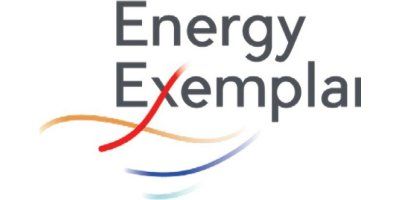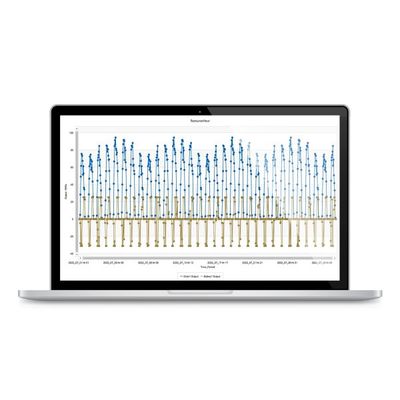

- Home
- Companies
- Energy Exemplar Pty Ltd
- Software
- Aurora - Energy Forecasting Software

Aurora - Energy Forecasting Software
New paradigm shifts toward renewable generation and the repowering of the world’s grid are driving a power generation and investment renaissance. Given the complexity and the various uncertainties, you need a model that is fast yet comprehensive and consistent.
With your market knowledge and Aurora`s speed, robust algorithms, and flexible design, you`ll have what you need to answer the most important questions. Aurora gives you the power to quickly bring in your data, evaluate countless scenarios with fast simulation times, and automate insights with reports and charts.
- Power Market Price Forecasting
- Energy Portfolio Analysis
- Optimized Resource Expansion
- Power Market Risk Analysis
Fast, Transparent, and Easy to Use
Aurora`s cutting-edge algorithms give its dispatch engine both robustness and exceptional speed. At the same time, state-of-the-art software design provides parallelization options and advanced automation capabilities to utilize computing resources without human intervention. Unlike other modeling toolsets, Aurora gives you easy access to interim results (view results mid-simulation), including resource operation details, marginal resources, flows between zones, and reserve margins, enabling you to quickly evaluate the effect of your latest data changes on results.
Aurora scripting exposes its data and functionality so programmers can automate data input, update values mid-simulation, retrieve results, and batch process as many simulations as desired.
Aurora provides easy-access and analysis of the simulation results with fully customizable outputs and queries, in addition to many diagnostic reports, to help you quickly gain insight from your simulations.
Capabilities such as linking with Excel, importing from other databases, scripting to automate data entry, and computational data sets (CDS to automate pre- or post-processes) all enable easy integration with any process. Integrations further include web-based data sources and other subscription services.
Aurora provides numerous unique types of zonal and nodal output tables. Results are available at a sub-hourly, hourly, daily, monthly, and yearly level. What is included in the results is fully customizable, and queries and quick views make it easy to run the same reports on all your simulations. Outputs also include powerful diagnostic detail for long-term, zonal, and nodal simulations to better understand the results.
Quickly and effectively use proprietary assumptions to create a robust set of scenarios and results for decision-makers. Aurora`s Project Scheduler provides multiple concurrent simulation runs in a single interface. Multiple scheduled projects can run in the background across multiple servers and you can see them all from a single place.
Aurora includes a powerful GIS display to visualize bus-level results for nodal simulations. It can produce heat maps for various outputs, including all three components of LMPs: marginal energy costs, congestion, and losses.
Furthermore, Aurora displays loss penalty factors and loss sensitivities. Users can instantly see how system losses would change with respect to a net injection at a given bus. Results are available by time period and condition (e.g., on-peak)
Aurora is offered with some of the most comprehensive and meticulously researched datasets available. Expressly created for modeling power markets, the North American (covering WECC, EIC, and ERCOT) datasets come ready to run and are updated yearly. Our team of analysts scours national, regional, and local sources for relevant detail on all major drivers affecting dispatch and market prices, such as:
- Long Term Capacity Expansion (LTCE)
- Generating Unit Detail (including renewables)
- Fuel Price Forecasts
- Area, Zone & Pool Demand
- Hydro Energy and Constraints
- Emissions Rates, Limits & Prices
- Spinning & Operating Reserves
- Nodal & Zonal Transmission
- Flexible System Definition
- Online Data Documentation
Renewable and Battery storage modeling
Aurora is the ideal tool to assess the impact of new and existing wind, solar, and other intermittent generation sources. The model`s robust dispatch logic captures and reveals the resulting changes in generation, imports/exports, reserve levels, and prices. In addition, Aurora`s long-term capacity expansion logic accommodates intermittent resources and includes many features that enable convenient future-build-out scenario testing and comparison.
Unlike other tools on the market, Aurora gives you unlimited flexibility to define generator types and constraints enabling you to analyze emerging technologies at will.
Aurora’s advanced dispatch logic uses market economics to determine the long-term resource position. Aurora’s recursive optimization process identifies the set of resources with the highest and lowest market values to produce economically consistent capacity expansion and retirement schedules.
Aurora forecasts price and dispatch using hourly demands and individual resource operating characteristics in a transmission-constrained, chronological dispatch algorithm. This makes Aurora ideal for determining the economic value of each unit over time.
Aurora is the only model that chooses from new resource alternatives based on the real levelized Net Present Value (NPV) of hourly market values. Aurora compares those values to existing resources in an iterative process to optimize the set of new units.
Model non-fundamental constraints like mass and rate-based emission limits, RPS targets, and reserve margin targets. Aurora’s robust LTCE logic will optimize the generation mix while allowing users to understand impacts of these constraints.
The full set of standard operational and cost parameters for new and existing resources are considered in the LTCE, providing a robust framework from which to evaluate different technologies types (baseload, RES, storage, demand side, etc.), as well as different cost and incentive profiles.
